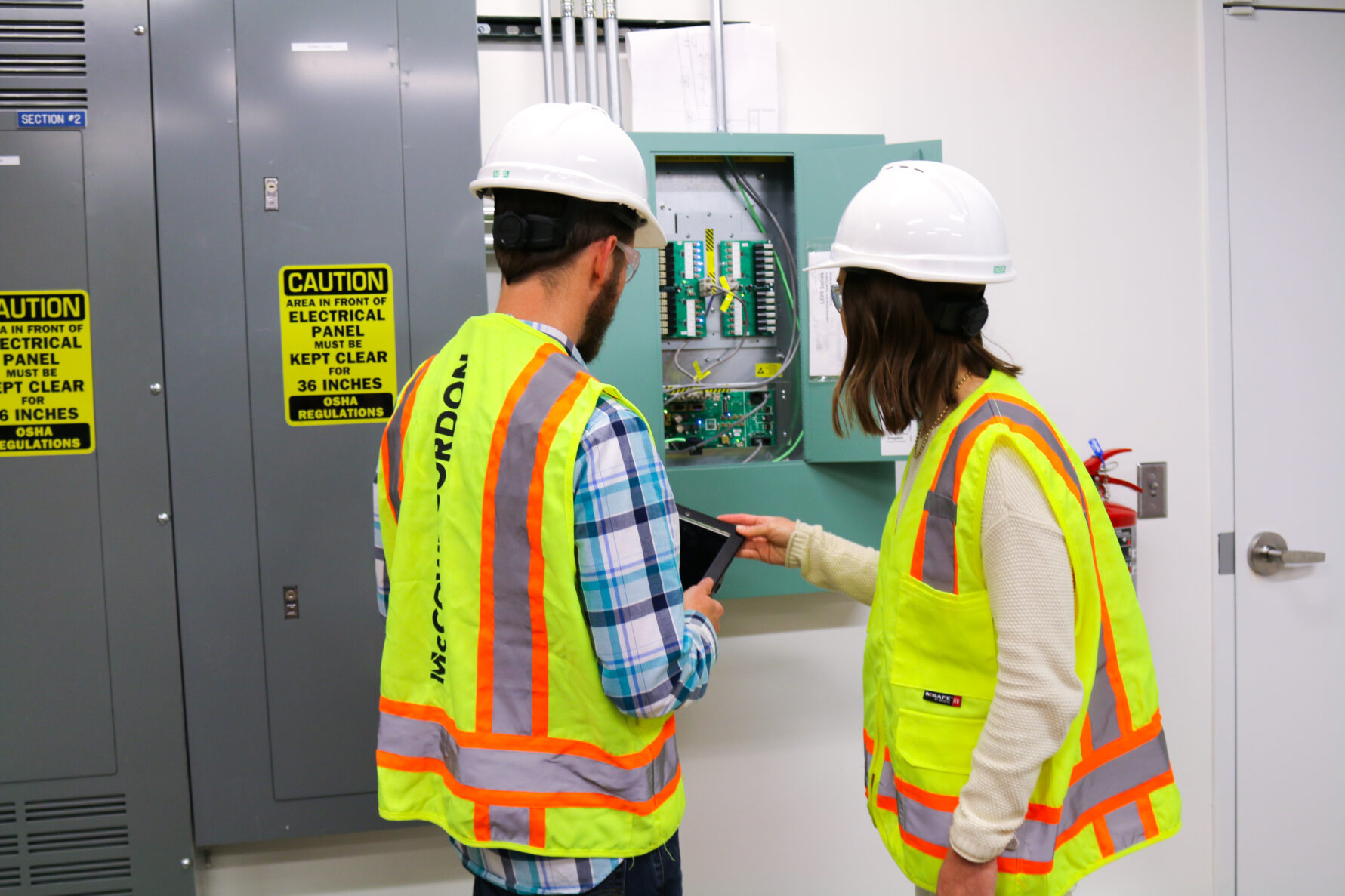Leverage a construction manager to find the best way to adapt your pharmacy to USP compliance standards.

Written by: Derek Kautio, Project Executive McCownGordon
By December 2019, new standards will take place in compounding pharmacies. Compounding pharmacies are not your typical neighborhood retail pharmacy. These pharmacies create personalized medicine for specific patients, changing the dosage and concentration depending on the patient and their needs. Most compounding pharmacies are in hospitals. And working in that environment, with multiple drugs and compounds, comes with risks to the pharmacist and patients.
Hospital pharmacies and oncology practices have seen many standards change in the last couple years regarding the application of sterile compound and handling of hazardous drugs. To help prevent as much risk as possible, the United States’ Pharmacopeia established USP 797 and USP 800. These new regulatory revisions address all the changes in the past and clarify all the questions and commonly misconstrued applications.
From USP website the new standards descriptions are below. For more information, click on the standard you’d like to learn more about.
- USP 797– Standards designed to improve patient safety by reducing the number of transmitted infections due to improperly compounded pharmaceuticals by updating the responsibilities of compounding personnel, training, facilities, environmental monitoring, and storage and testing of finished preparations.
- USP 800 – Describes requirements including responsibilities of personnel handling hazardous drugs; facility and engineering controls; procedures for deactivating, decontaminating and cleaning; spill control; and documentation. These standards apply to all healthcare personnel who receive, prepare, administer, transport or otherwise come in contact with hazardous drugs and all the environments in which they are handled.
Many hospitals and practices are currently reviewing their standards and procedures and identifying opportunities to meet the USP 797 and 800 standards within their practice and pharmacy. There are many facets pharmacies must consider due to the functions of compounding and handling of hazardous drugs. All facilities looking to meet the newest standards face their own unique challenges.
Pharmacy Update Challenges
Some of the main obstacles we see pharmacies facing relate to space (especially if located in a hospital), structural issues and mechanical functions; all areas where McCownGordon can help evaluate and walk the pharmacy through pros and cons to become an up-to-code pharmacy. Per USP 797 & USP 800 HVAC systems must be isolated. One of the biggest reasons to ensure proper airflow is to protect the health of staff who prepare cancer-fighting agents and other hazardous compounds.
Best practice is to serve these spaces with dedicated HVAC systems rather than tying them into air handling units that serve a broader area throughout the hospital. That’s because the temperature, humidity, air changes and exhaust of the critical pharmacy spaces vary significantly from other hospital functions and their HVAC requirements. At a minimum, these compounding rooms need an isolated exhaust system to pull out contaminated air, control air changes, and maintain air pressure differentials to ensure a healthy environment for staff and patients.
While construction firms are not authorities in daily pharmacy operations, contractors like McCownGordon offer expertise in structural and mechanical construction services and can serve as a valuable resource to pharmacies looking to meet these new requirements. We want to share our experience on how to best approach any USP compliance update when it comes to the built environment with a focus on developing a strategy that reduces costs, schedule, phasing and temporary operational inefficiencies during the upgrade process. A quality construction manager with experience in pharmacy projects provides the hospital, practice or end user with valuable information to allow for the best decisions to be made.
As the construction manager on these types of projects, we understand variations on the solution that work best for each organization based on the constraints they face.
Case Study – Olathe Health
On a current project with Olathe Health we are providing design-build services with Pulse Design Group and Brack & Associates. Olathe Health initially anticipated an in-place pharmacy renovation. Given existing workflow and structural constraints, the team explored the impacts on daily operations and the additional space required to meet the current USP compliance standards. Alternatively, we also studied options for relocation which allowed for better utilization and efficient workflow.
Ultimately, the client, with the guidance from the construction and design team, determined that the existing pharmacy location came with too many constraints, and the existing location may be more valuable for other hospital functions. The end solution was to build an addition to the hospital to relocate the pharmacy. This was the most cost-effective option to the current challenges the hospital faced. Building a new pharmacy allows USP 797 and USP 800 requirements to be met, and the pharmacy enhances its workflows and efficiencies to provide better service to the health system.
From a construction viewpoint, working in an operational pharmacy provides challenges and requires multiple phases to achieve updates to meet the new USP Requirements. Relocating the pharmacy allows the current pharmacy to be in use while the new location is completed, reducing the amount of downtime or deferred service costs that would be present with an in-place renovation. In turn, time equals money.
The longer the duration of construction or pharmacy downtime the higher the cost to meet the same end goal. Our team weighed patient safety risks and overall cost implications with a renovation, compared to the cost of a new addition, faster completion, and improved pharmacy operations. By working hand in hand with the client, the team made it an easy decision for Olathe Health. Olathe Health realized savings in design-build construction costs and in return, they received a new pharmacy that meets USP797/800 requirements, is better suited to serve their patients and improves on pharmaceutical efficiencies and workflows.
For any hospital or practice considering an update to their pharmacy, it’s important to put the up-front construction cost into perspective of the intended life of the new construction. In speaking with multiple clients, we have consistently heard the construction costs associated with USP 797/800 standards are a small fraction of the life cycle costs to operate a compounding pharmacy, sometimes the construction costs as amounts only 3% of the useful life of the pharmacy space.
By working with a construction manager early, pharmacies gain valuable expertise to help them evaluate the standards and the best way for their practice to upgrade, whether it be to add on, rebuild, relocate, or just make a few minor changes.
McCownGordon is dedicated to helping customers understand the complex decision-making factors when it’s time for hospital upgrades. We draw our expertise and knowledge from years of experience solving construction and operational challenges.
Interested in learning more? Check our healthcare projects and sign up to receive newsletter.





